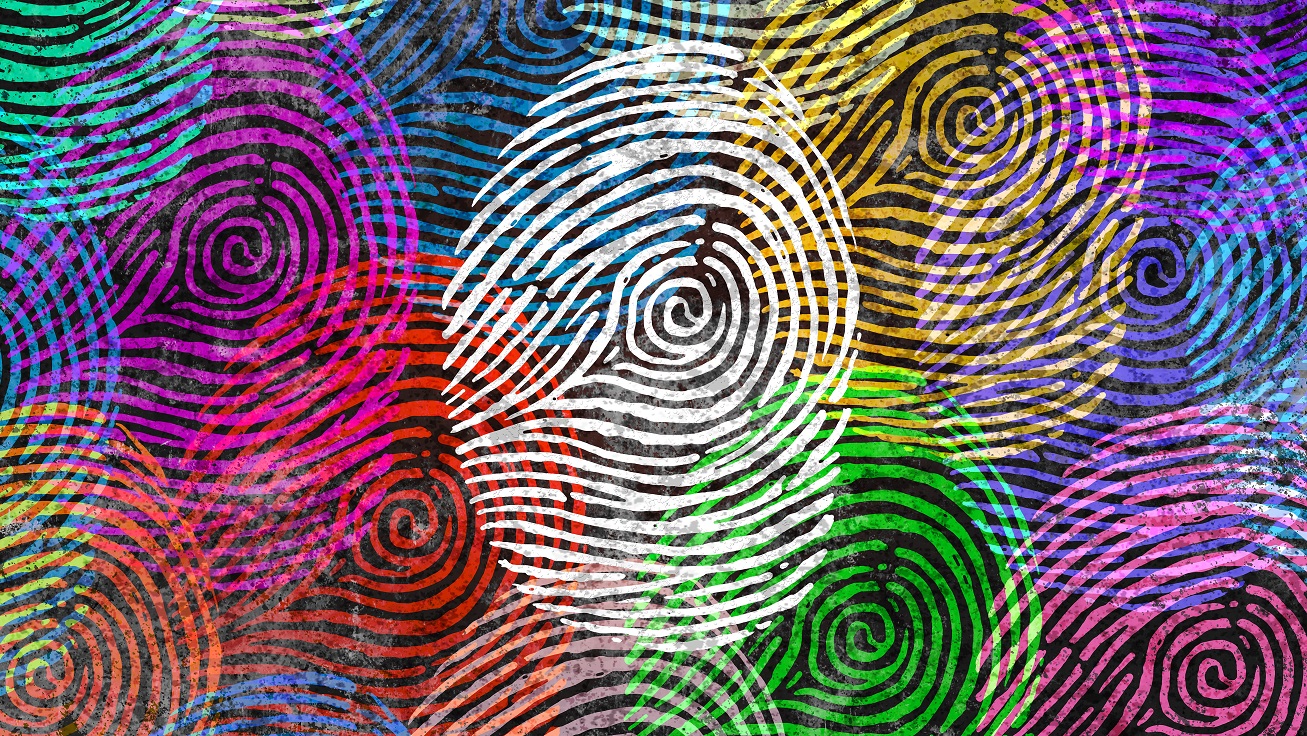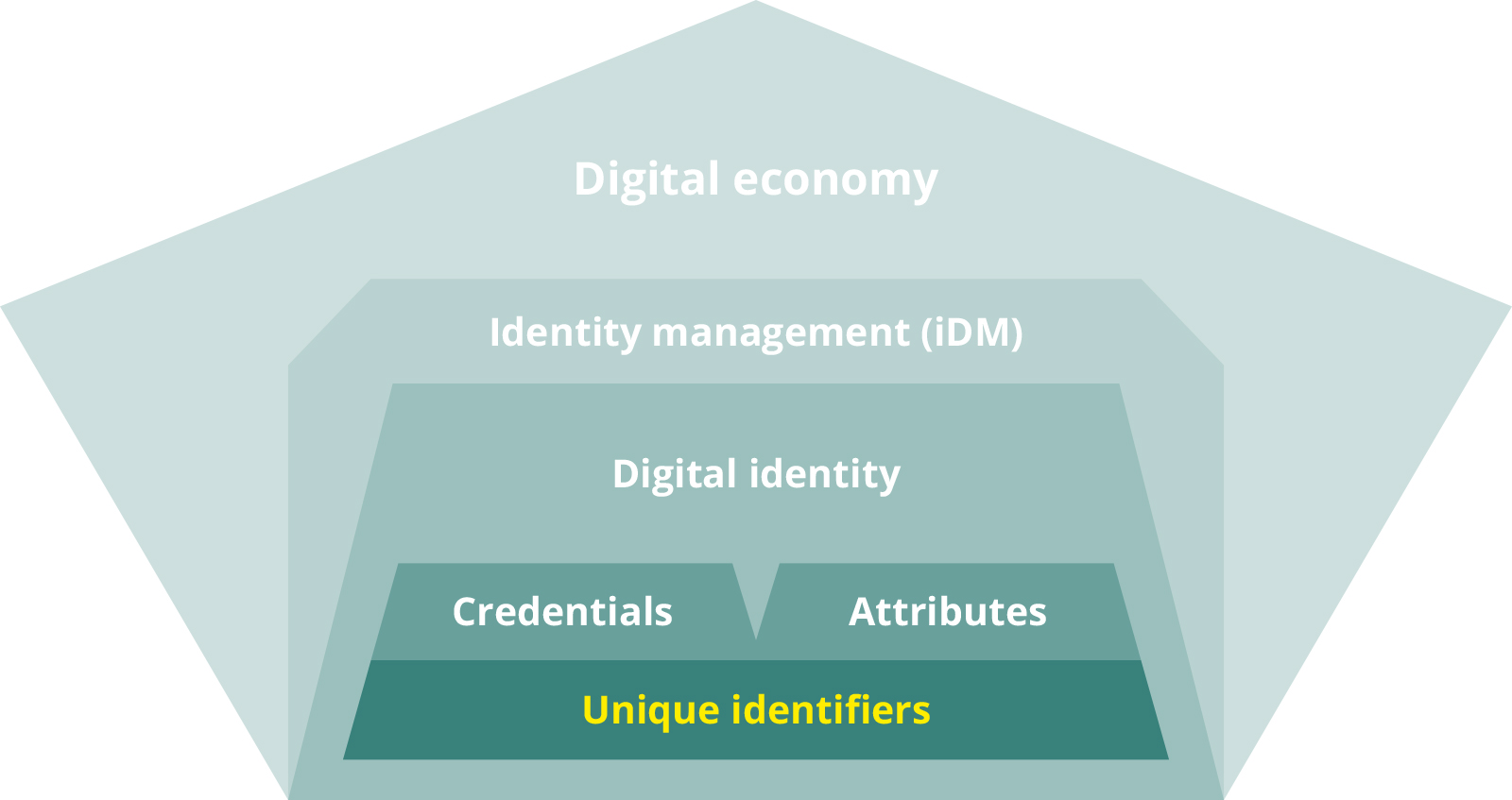
Who has never been annoyed by the need to identify themselves to access online services, with their plethora of elusive passwords and ever-changing fields? Why could this not be done once and for all with a single, readily-available proprietary badge, instead of endlessly feeding others’ data stores and having to volunteer personal information out into the open?
Identity management (iDM) has emerged alongside digital technologies and in particular the introduction of desktops. Digital identities are the cornerstone of web 2.0, where interactive and personalised services – exemplified by social networks, blogs or online payments – rely on the ability to identify parties.
However, iDM does not just apply to humans: devices, organisations, and services must all have their own digital identity, enabling them to interact and be tracked. Likewise, identities can be ascribed to other subjects, such as buildings, cars, pets – and artworks.
Defined as the digital representation of what is known about a subject, a digital identity can be used for different purposes, from allowing someone to claim or authenticate their identity to establishing their right to drive a car or record a transaction.
A digital identity anchored around its unique identifier captures various forms of information, whether attributive such as name, passport, National Insurance or serial numbers; metric such as a model type; or behavioural such as travel visas, web searches or device switch-off time. Companies have long employed standard protocols to verify user identity, such as OpenID, and for related processes, such as Security Assertion Mark-up Language for single sign-on. Identity management systems then focus on the creation, administration and deployment of identifiers, credentials and attributes.
Critically, there is no digital identity without an identifier, no iDM without a digital identity and no digital economy without iDM systems (see Figure 1).

Figure 1: Identity within the digital economy
The value of identifying assets
While the rest of the world is ushering in the fourth industrial revolution by tackling the matter of identifiers, the art sector is still contemplating the benefits of the digital economy. Barely is it looking at applying iDM to its precious assets, starting with its keystone: an artwork identifier.
To foster trust, it is common practice to produce credentials for a given artwork, such as certificates of authenticity and provenance data. Equally, the sector is well equipped to describe each artwork’s attributes to allocate value, and has its own best practices and standards, such as the Categories for the Description of Works of Art promoted by Getty. Yet while all of this information is valuable, it is at present fragmented and duplicated: a unique identifier would connect all these elements to the artwork in question and foster data streamlining. For the art world to make its digital transformation, therefore, it needs to attach unique identifiers to artworks.
"To foster trust, it is common practice to produce credentials for a given artwork, such as certificates of authenticity and provenance data"
The digital transition
With the evaporation of face-to-face interactions at art fairs, openings, private events and conferences during the pandemic, the traditionally-minded art sector has moved almost all interactions online to survive. But the pandemic should not be the sole driver.
Adding to this is increased regulation and the threat of criminal transactions in what has tended to be a self-regulated sector. This helps build a case for digital protection in the art world to ensure trust and transparency, which is where the Art Identification Standard (AIS) consortium comes in.
- to enable assignment of a standardised, unique and permanent identifier to a given artwork
- to bring together as many stakeholders as possible to secure the widest and fastest adoption of this not-for-profit initiative
- to build a technical and governance infrastructure for registering unique identifiers, decentralised on the blockchain, transparent and open-source.
- human-generated badges from a peer or representing gallery familiar with their studio practice
- event badges from a public institution that has exhibited the work or an outlet that has written about it
- digital badges embedded in digital catalogues raisonnés, smart contracts or non-fungible tokens.
As the artwork progresses through the ecosystem, services and organisations using the OID enrich its digital identity with events, interactions and documents. This decentralised profiling through the accumulation of digital badges and behavioural sequences leads either to the increased legitimacy of the artwork, providing verifiable reputation stamps, or its repudiation, if there are false or non-verifiable stamps or records of probing tests. Web 3.0 tools such as AI would automate the collection and interpretation of this mass of data.
Curators, collectors or museums can consult the AIS database, examine the index pointing to external data points then seek access to their related repositories from a range of custodians. For instance, a public museum would more likely keep their archives open and free, while an art historian may introduce a paywall to consult their research.
The more transparent the data point, the stronger the digital identity and the greater the trust: an auction house, for instance, by making a sale transaction public, improves the credentials of the artwork, which increases its value for the collector when time comes to resell the work.
Furthermore, by embedding OIDs as a common denominator in their systems, AIS members enable the integration of their respective solutions, thus sharing data more easily.
From federation to decentralisation
Let’s revisit the annoyance of identifying ourselves to access online services. Either centric repositories challenge us to create a profile with a user name and password to gain repeat access via multiple-factor authentication, or a federation of data hoarders including Google, Facebook and LinkedIn volunteer their logins to a constellation of service providers. They own our data and we control little of it.
Participants in the art market are highly selective in giving access to information, for insider knowledge commands respect, influence and remuneration. Bearing this in mind, the OID enables each artwork to carry its own identity wallet, multi-layered in such a way that data point owners have an incentive to enrich it of their own volition.
First, the decentralised ledger – the blockchain – on which OIDs are registered gives reassurance that the unique identifier cannot be tampered with. Second, the more layers of metadata there are, the more redistributed value each data point acquires. In effect, this mechanism incrementally increases trust and stimulates transparency.
While AIS ensures the governance and custodianship of OIDs, these are collectively owned, and each artwork’s identity wallet is the product of collaboration between artists, collectors, curators, museums, galleries, auction houses and other stakeholders. Within this, each participant retains ownership and control of their data. This is an essential precondition if the use of OIDs is to scale up and lay a solid foundation for the art world’s digital era.
"Participants in the art market are highly selective in giving access to information"
